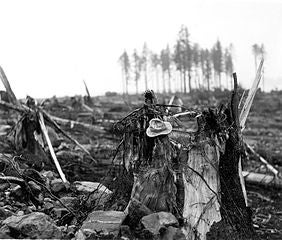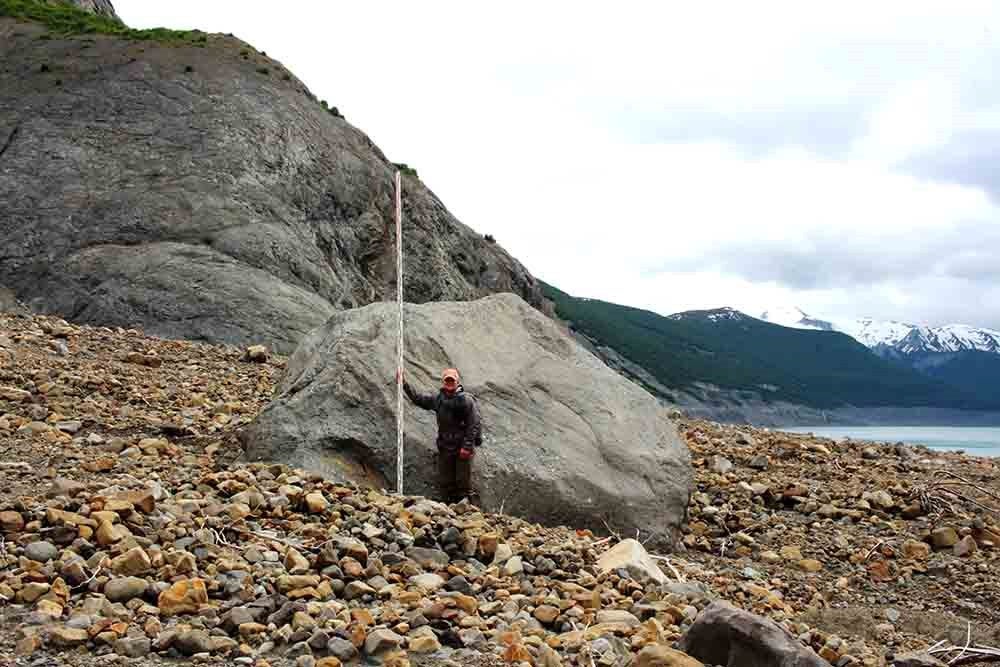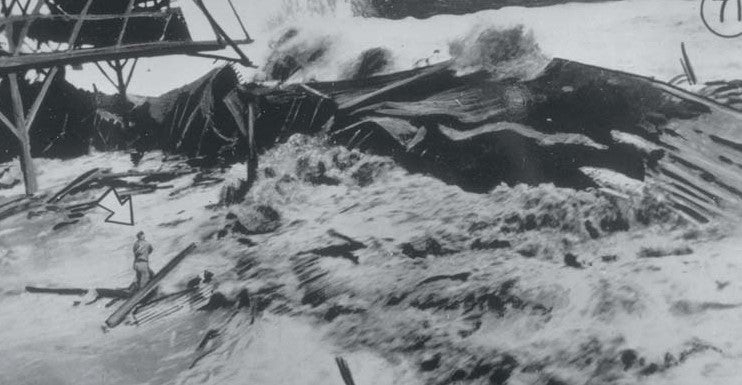
Since 1788, huge waves called tsunamis have struck the U.S. just 21 times, according to the World Data website. But some have been devastating, killing hundreds of people and destroying billions of dollars worth of property. These are the biggest tsunamis in the country’s history.
Lituya Bay, Alaska, July 10, 1958
On July 10, 1958, a magnitude 7.7 earthquake occurred on the Fairweather Fault in southeastern Alaska. It caused significant geologic changes in the region, including a rockfall in Lituya Bay that generated a gargantuan wave with a maximum height of 1,720 feet — the world’s largest recorded tsunami, according to the Western States Seismic Policy Council. This is nearly as tall as One World Trade Center, the structure built in Lower Manhattan after the 9/11 attacks.
Five people were killed. Three died on Khantaak Island at the mouth of Yakutat Bay when the beach they were standing on subsided 100 feet below sea level. The other two died when the tsunami sank their boat at Lituya Bay.
Icy Bay, Alaska, Oct. 18, 2015
Nobody was close enough to be harmed, and the only damage to infrastructure was rocks scattered on a beach used for landing bush planes, according to the National Park Service. Landslides that generate tsunamis most often happen in landscapes with retreating glaciers, like many areas where Alaska parks are located.

Lituya Bay, Oct. 27, 1936
On Oct. 27, 1936, a tsunami hit Lituya Bay with a maximum run-up height of 490 feet in Crillon Inlet at the head of the bay. The four alleged eyewitnesses to the wave in Lituya Bay itself all survived, according to Wikipedia (limited records exist about this tsunami). The maximum inundation distance was 2,000 feet inland along the north shore of the bay. A landslide triggered the tsunami.
Lituya Bay, Jan. 1, 1853
A tsunami presumably occurred on Jan. 1, 1853, in Lituya Bay in what was then Russian America. Records about this tsunami are also lacking, but studies of the Lituya Bay area identified the event, which probably occurred because of a large landslide on the south shore of the bay near Mudslide Creek. The wave rose to about 394 feet, flooding the coast of the bay up to 750 feet inland.
Shumagin Islands, Alaska, Aug. 6, 1788
Earthquakes of magnitude 8 or greater hit the Alaska-Aleutian subduction-zone in 1938, 1946, 1957, 1964 and 1965. However, scientists know little about ruptures prior to the 20th century west of Kodiak Island. Incomplete written Russian accounts suggest that the area between east central Kodiak Island and Sanak Island ruptured, likely during two tsunami-producing earthquakes in the summer of 1788.
Evidence from various geological surveys shows the second earthquake on Aug. 6 was presumably the source of a tsunami that Russian church records from Unimak Island suggest inundated the Shumagin and Sanak islands (350 and 450 miles southwest of Kodiak). The surveys estimated the strength of the earthquake to be 8.0.
Other notable US tsunamis
The Great Alaska Earthquake, which struck on the afternoon of March 27, 1964, is the largest earthquake in U.S. history at a magnitude of 9.2. The earthquake was felt as far away as Seattle, more than 1,200 miles to the southeast of the fault rupture, where the Space Needle reportedly swayed. A tsunami 220 feet high produced by the earthquake killed more than 120 people, and it caused an estimated $2.7 billion in damage in 2021 dollars. Most of Alaska’s major transportation routes, ports and infrastructure lie near the eastern segment of the Aleutian Trench that ruptured in the 1964 earthquake.

Another earthquake hit near Alaska’s Aleutian Islands in 1946. It happened on April 1 and generated a Pacific-wide tsunami. The magnitude 8.1 earthquake was blamed for 165 deaths: 159 in Hawaii, five in Alaska and one in California. Wave heights reached an estimated 138 feet in Alaska and averaged 30 feet in Hawaii, where the tsunami struck without warning nearly five hours after the earthquake. The earthquake caused relatively little damage in Alaska, but in Hawaii there was extensive damage. The city of Hilo suffered approximately $4.2 billion in damage in 2021 dollars and lost most of its waterfront buildings.
Click here for more FreightWaves articles by Nick Austin.
You might also like:
Self-described ‘shaman’ arrested in California wildfire arson
Wildfire crews battling blazes — and supply chain kinks







